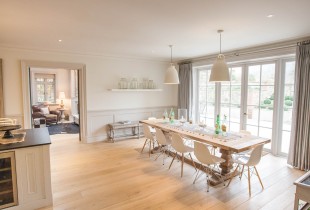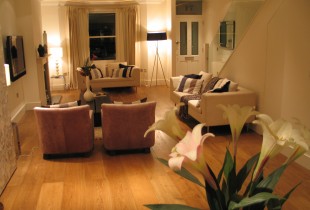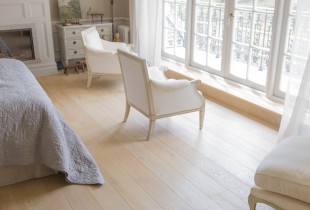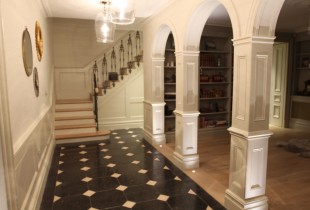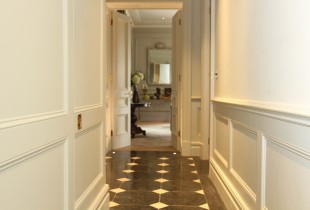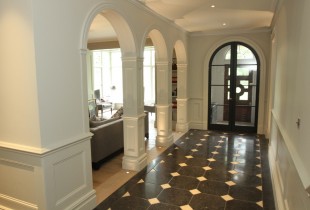What flooring to use in your new extension
You took the plunge. The plans are done, planning permission has been granted and you are now an avid collector of paint charts. Now… one thing you need to start considering asap is what flooring to use in your new extension once the screed (or concrete layer) has been laid. This is a vital consideration to make as it can cause huge delays to the project if you haven’t considered your options thoroughly in advance.
Here are a few suggestions of the most popular floor materials that you could use in your extension:
Engineered wood or wood effect tiles
Engineered wood is an undeniably gorgeous flooring material that brings a piece of nature into your home. It creates a softer finish to your property and is a timeless material that will add character to your home.
However, if you are putting an engineered wood onto of screed you will have to wait anything up to 60 days for it to dry out completely as it is said that screed takes a day to dry for every millimetre that is laid. This can cause huge delays to your project and increase cost exponentially. It is also worth noting that you cannot put rugs on top of engineered wood floors as they trap heat, which can damage the floor. Engineered wood is also not ideal in areas of high traffic as it can be easily worn and damaged.
With the resurgence of popularity or the parquet style of flooring (when wooden blocks are arranged in a geometric pattern), you may even want to consider the option of working with a designer to create you very own hard wood floor design! Just as one client did with us in this project.
Wood effect tiles are relatively new to the market, but are gaining huge popularity in the interior design world. They offer the beautify of an authentic natural wood floor but have the durability and ease of a tiled or ceramic floor – perfect especially for family bathrooms such as this one
Wood effect tiles are ideal when used in conjunction with underfloor heating as they have a great thermal conductivity capacity, and they will provide a great heat output. They are extremely durable so are perfect for areas of high traffic such as a hall or kitchen.
Vinyl Flooring (Wood or stone or any floor pattern or style you fancy really …)
Vinyl floorings should no longer be synonymous with your Gran’s dodgy kitchen floor from the 1970’s. Wood effect Vinyl is made using a printing process that replicates the pattern of actual wood, or stone, or any pattern really! It is another way to get an authentic wood, or stone finish without the price tag of a raw material, or indeed experiment with your floor design. You can now get embossed varieties which even feel like the natural product.
Vinyl flooring comes in a huge variety of colours and styles, and is quick and easy to install as it just clicks together. It is easy to clean and maintain, it is slip resistant and in most cases, can be used on top of underfloor heating. *Always check this with the manufacturer first.
Natural stone
Natural stone such as slate, limestone or marble are perfect for those seeking a contemporary but warm, natural finish to your home. Stone floors are perceived as being cold, however this can be mitigated with underfloor heating, as it retains heat well. It is perfect for houses with lots of traffic as it is extremely durable. You can also extend natural stone from your house into your garden as a patio, to create a feeling of unity and flow throughout your property.
The initial price to purchase an all-natural stone floor can be hefty, as not only do you need the material itself, but you will also have to pay for the hire of equipment to shape tiles, and labour time, which is longer as they are dealing with such a heavy product. You will also have to invest in a few specialist cleaning products to protect and properly maintain the stone. There are also maintenance costs that should be taken into account when considering a natural stone flooring as it needs to be sealed with a specialist product every year to stop it from absorbing stains and marking.
Again, just like with the hardwood floor, you may even want to design your own pattern as this client did with Belgian Fossil Limestone Tiles.

